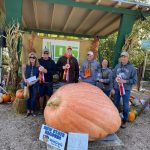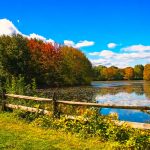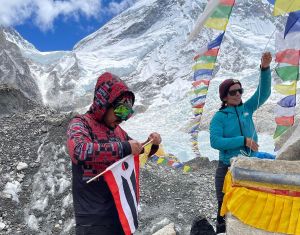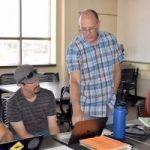The alpinist team Full Circle made international headlines when it became the first all-Black expedition to summit Mount Everest in May.
Full Circle’s accomplishment was widely celebrated. What was lost in much of the coverage, however, was this detail: Five college students from central Wyoming trekked to base camp to help Full Circle test climate sensor technology.
The Wyoming group, affiliated with the Central Wyoming College’s Interdisciplinary Climate Change Expedition program, included two Eastern Shoshone students, two Northern Arapaho students and one bike shop mechanic who’s the first in his family to go to college.
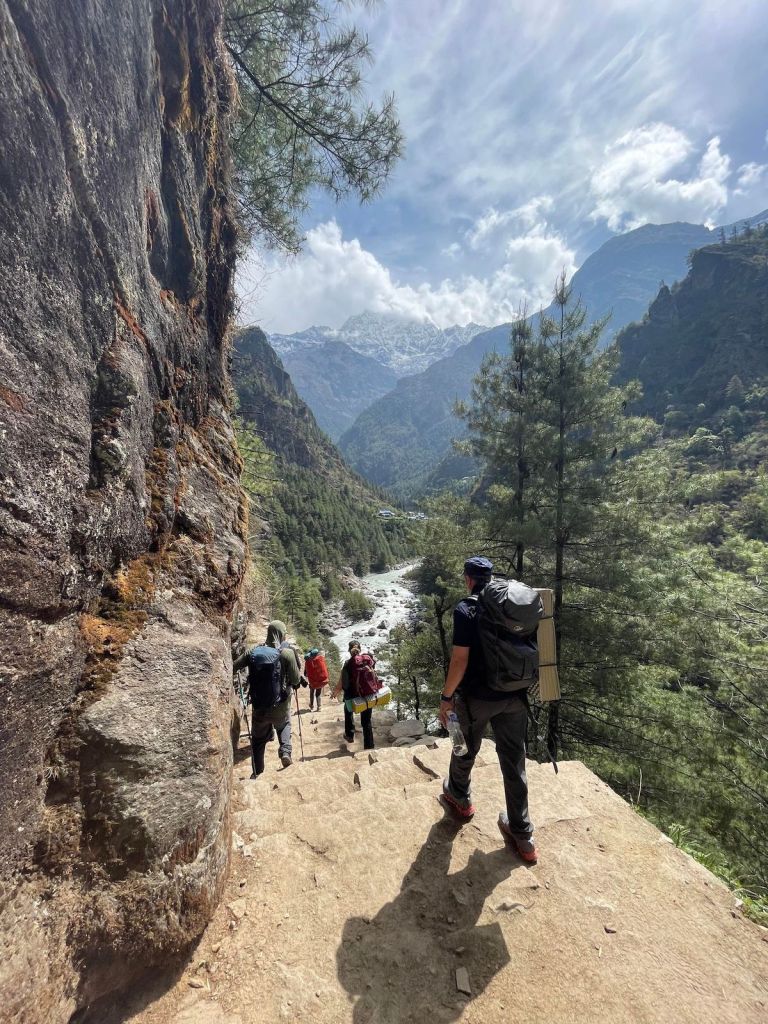 Members of the CWC ICCE Everest team hike toward the Himalayas. (CWC ICCE Everest team)
Members of the CWC ICCE Everest team hike toward the Himalayas. (CWC ICCE Everest team)
On the expedition, they met Full Circle’s climbers, tested emerging technology that may provide clearer data on high-altitude climate change and visited communities dealing with impacts of a changing climate. It was eye-opening, said Ryan Towne, the bike mechanic.
“The communities who are least responsible for climate change do not deserve to bear the brunt of its consequences,” he said. “Whatever we can do, as a school, as a community, to spread awareness for these cultures and their struggles is, you know, all that I can hope for.”
The young adults also had an adventure of a lifetime touring the vibrant city of Kathmandu, sharing meals with Nepali hosts, hiking into the thin Himalayan air and bonding as friends. They played a role in a historic achievement that felt singular in its own merit.
“I can say that I, a Native American female, have reached Everest base camp conducting climate change research,” student Jada Antelope wrote about the trip. “For this, I am beyond proud…”
An Everest expedition arises
Central Wyoming College’s ICCE program launched in 2014. The undergraduate research program weaves together science and outdoor education skills, and its students have undertaken expeditions to Tanzania (in partnership with the National Outdoor Leadership School), the Great Divide Mountain Bike Route and the Wind River Range.
The Everest project started as a nebulous concept and narrowed into focus only a couple months before it took place, said Jacki Klancher, director of instruction and research at CWC’s Alpine Science Institute, who wrangled the expedition. It spawned in part out of Klancher’s relationships with Full Circle members Phil Henderson and James “KG” Kagambi — all three have worked for Lander-based NOLS.
In conversations with the climbers ahead of their Everest attempt, Klancher said, the concept of a CWC student team came up. “They embraced us,” she said. “And the idea was we work with them to get their electrical engineer help testing some tech that we wanted to test.”
The concept of beta testing climate sensors, meanwhile, has roots in a NASA National Space Grant Consortium meeting in Jackson Hole in October, where young and promising STEM scientists gathered, Klancher said. That’s where she put out the message that she was seeking a portable climate sensor, something she has been wanting for some time for Alpine Science Institute programs.
“I was like, ‘y’all, all I want is a portable location-enabled temperature and [relative-humidity] sensor. Can anybody help?’” she said. That led to conversations with scientists from universities like Penn State, as well as the company MeteoTracker, who showed interest in developing prototypes.
As those conversations evolved and with a green light from Full Circle, Klancher next set out to secure funding and assemble a team. Several funders, such as Wyoming NASA Space Grant Consortium and Wyoming EPSCoR, backed the project. In selecting students, she first turned to program veterans like Towne and Aidan Darissa Hereford, who had ridden in the bike trek, and Red Thunder Spoonhunter, who was on the Tanzania expedition.
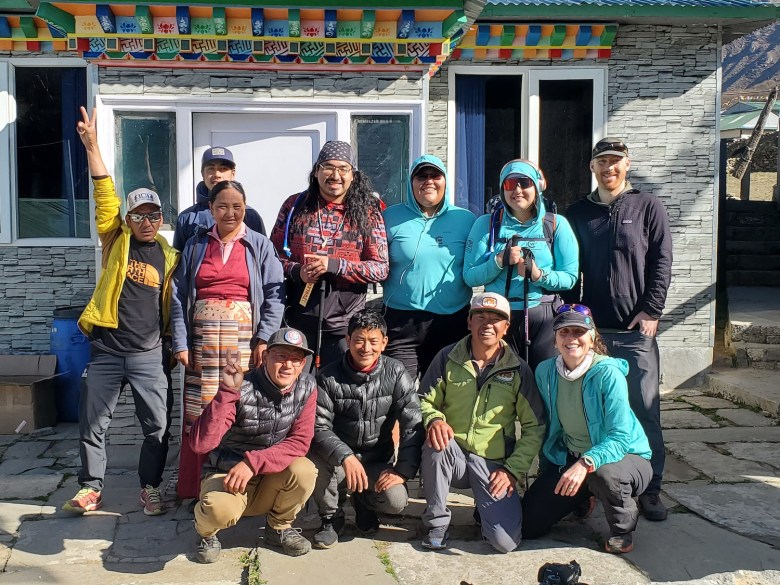 The CWC ICCE Everest team and guides in Phortse, Nepal. (Antoine Day)
The CWC ICCE Everest team and guides in Phortse, Nepal. (Antoine Day)
When Klancher first proposed the expedition, Hereford said, she was reluctant. Hereford was unsure about traveling abroad during a pandemic for one, she said.
“It seemed pretty scary,” she said. “So I was just debating on it for … about a week. [Then] I thought ‘why not? Just go for it. This is a once-in-a-lifetime chance.’”
Antelope, who along with Spoonhunter is Northern Arapaho, and Antoine Day, who like Hereford is Eastern Shoshone, rounded out the team.
Once the team solidified, Klancher and the students scrambled to apply for funding, train for high altitude trekking, expedite passport applications and secure requisite vaccinations with barely any time to spare.
On April 25, they left Fremont County on the first leg of an enormous journey. In the end, base camp occupied two days of their experience-rich three-week adventure.
Travel weary and trekking
After a ride on a triple-decker plane and a long layover in Dubai, the students landed in the teeming city of Kathmandu on April 28, jet-lagged from the 12-hour time difference. They spent a couple days touring temples and negotiating the incessant city traffic before riding a helicopter to the precarious Lukla airport. From Lukla, a carless city roved instead by yaks and trekkers, they set out on foot. They hiked for 10 days, stopping at tea houses, learning Nepali words from their guides and experiencing the countryside one step at a time.
“It was really surreal,” Hereford said. “And it was really nice to see, like, the villages and see how they live and how things are just really different over there.”
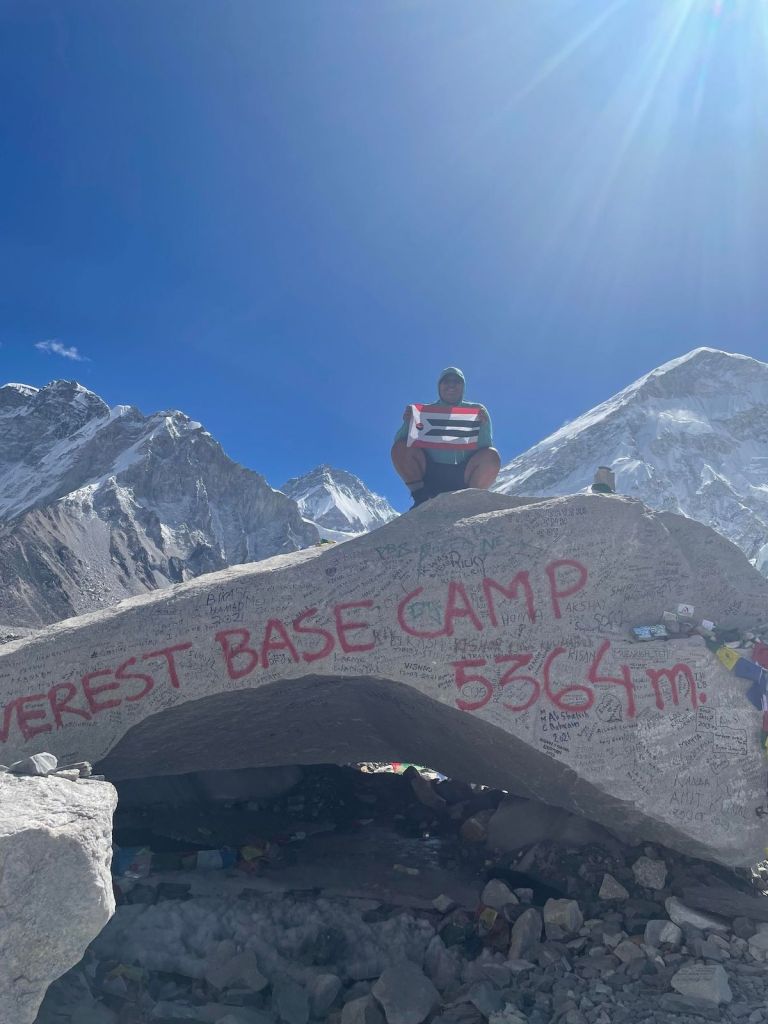 Jada Antelope perches on a boulder at Everest base camp with the Northern Arapaho flag. (CWC ICCE Everest team)
Jada Antelope perches on a boulder at Everest base camp with the Northern Arapaho flag. (CWC ICCE Everest team)
Each day was vibrant, Klancher said. “It was spectacular — tea houses and people and culture and the landscape. It felt like we did a month’s worth of living in those 10 days.”
The expedition wasn’t without trials. The team had to manage a gamut of illnesses — including acute mountain sickness, which felled Hereford — and contend with foul weather.
Members healthy enough to keep hiking reached base camp on May 9. It was a different world at 17,600 feet, Day said. “Base camp is tent city, tents everywhere,” he said, with constant helicopter traffic overhead.
There, they met the Full Circle team and hiked to the ice fields. They partnered with Adina Scott, a Full Circle researcher and engineer, to work with the sensor prototypes, and Towne carried one on the trek down.
After two nights at base camp, the students started the journey home. Full Circle reached the summit of Everest on May 12.
It was a wild ride. But reminders of home helped bridge the familiar with the foreign, Hereford said. “What I really loved the most was waking up every day and smelling … over here in our community, you know, we burn sweetgrass … and so it smelled like that every morning, but they called that juniper.” One thing that helped her through her altitude sickness, she said, was eating a Nepali version of fry bread.
Crunching data, telling the tale
The team returned on May 19. In early June, members were still processing the adventure, and hadn’t yet determined the quality of the data the prototypes collected or the technology’s potential.
“We were successful in doing what we wanted to do, which was to partner with Full Circle to beta test these prototype units and go, ‘Can these things even do what MeteoTracker says?’” Klancher said.
Not knowing the answer to that immediately illustrates the long and sometimes painstaking process of science, she said.
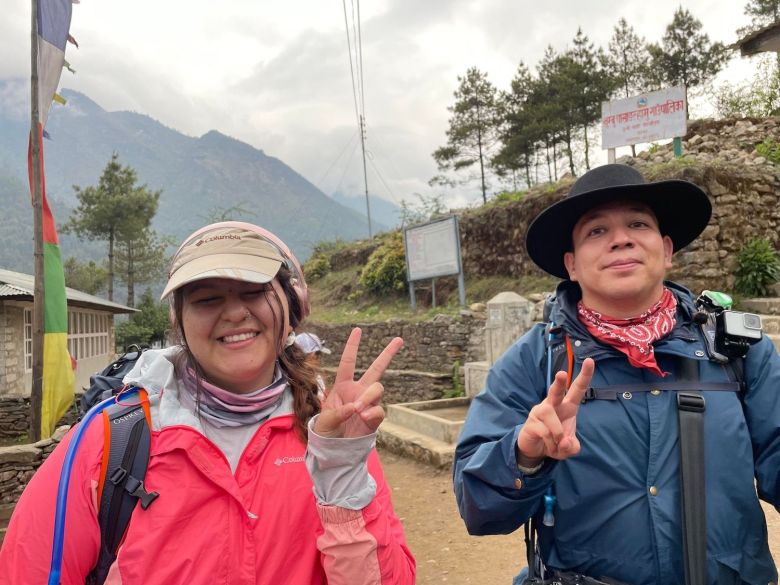 Aidan Hereford and Antoine Day on the trek. (CWC ICCE Everest team)
Aidan Hereford and Antoine Day on the trek. (CWC ICCE Everest team)
“So, you know, like people asked, ‘What did you learn?’ It’s like, well, we didn’t solve climate change for all time and save the Nepalese and 1.6 billion people from surface water crises,” Klancher said. Instead, they tested an idea, and will offer feedback in an attempt to improve the devices and ultimately the science, Klancher and Day said.
It’s “baby steps,” Klancher said, that one day could lead to, for instance, Sherpas carrying the units to gauge high-altitude climate conditions.
“Did we meet my objectives of diversity, equity, inclusion in STEM? We did,” she said. “Did we educate students and help provide them with professional preparation…? Yes. Did we contribute to climate and water science data and tech? Yes. Did we work on a ton of partnerships…? Yes.
“And did we have a blast? Yes,” Klancher said. The team was a delight, she said. “These guys just figured it out and laughed so much. …I did not have to do a lot of interpersonal group management … It was kind of the magic group.”
The students will present on their expedition in September in Riverton, and Day will curate a photography exhibit of images he took later in the fall.
The post Climate data on top of the world: CWC students trek to Everest appeared first on wyomingdigest.com.



